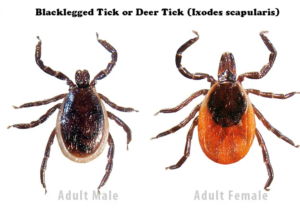
Meet Rex, one of our good boys who has tested positive for exposure to Lyme disease, contracted from a tick bite. While we may know to keep an eye for the characteristic rash and flu-like symptoms that humans experience after a bite, it presents completely different in our furry pals. Often, symptoms don’t develop for weeks or even months, and it can be challenging to know when the exposure occurred.
In canines, swollen joints and shifting lameness are most frequently exhibited. A fever may be present. Your veterinarian will be able to give a full assessment through blood testing, but most dogs respond well to antibiotics. They may recommend further screening; there is a risk of developing kidney disease associated with Lyme exposure.

Having an overall awareness and prevention is crucial for the entire family – canine and humans alike. For dogs, use a monthly tick prevention treatment, readily available through your vet or pet stores. Many vets now recommend treating year-round. If our dog has picked up a tick, it is likely that we were with them. Dress with appropriate coverage in areas that are more likely to have ticks. It is important to do full body tick checks for both pets and people since removal within 24 hours can prevent infection. Local health units have thorough resources for identification, prevention, removal, and surveillance.
Our pal Rex hass responded well to his treatment, and our team is keeping a close eye on him to see if there are changes in his health. He’s ready and waiting to find his new home!


